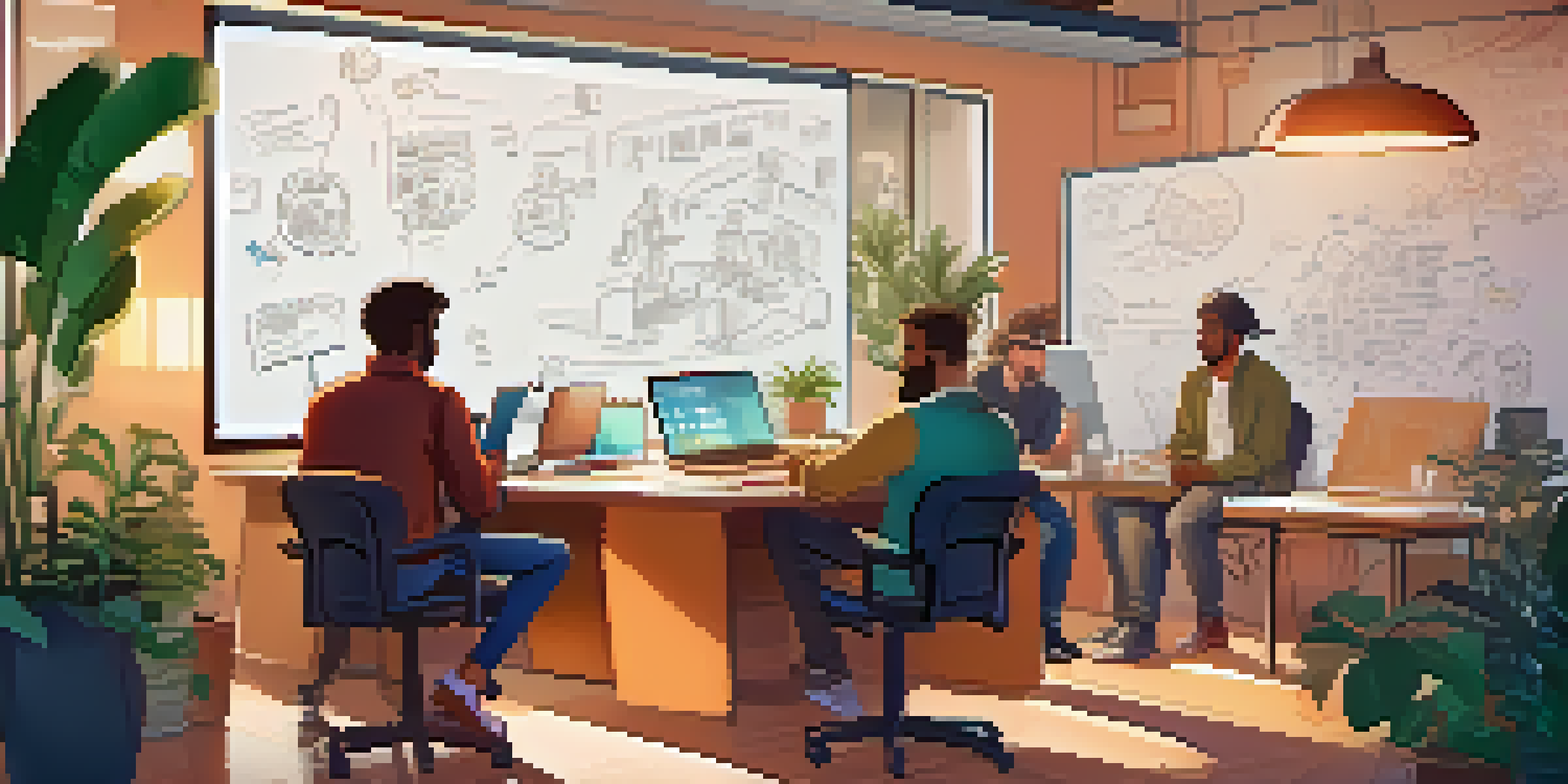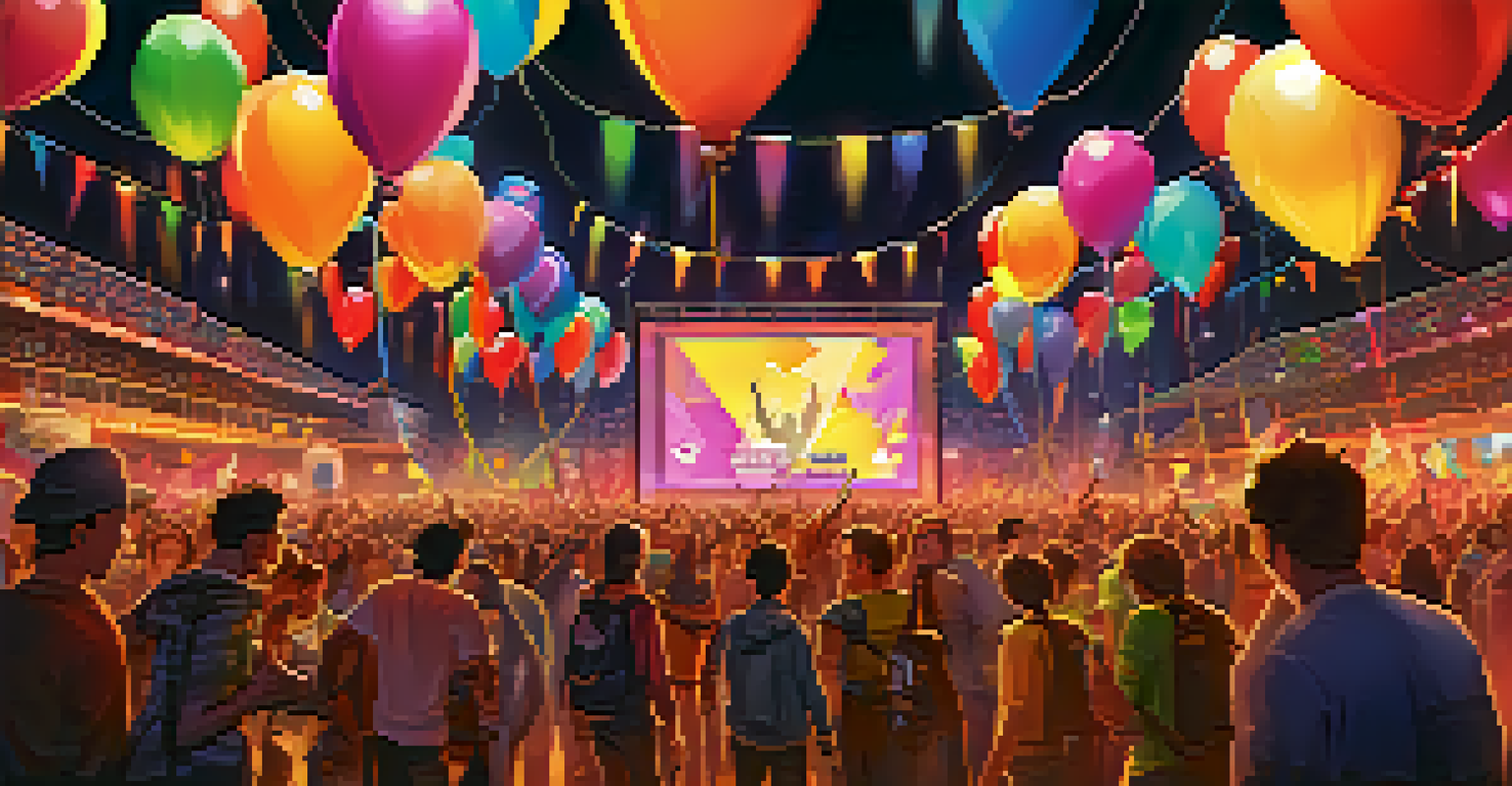Understanding Game Development: From Concept to Launch

The Spark: Generating Game Ideas and Concepts
Every game begins with an idea, often sparked by personal experiences or cultural trends. This initial concept can vary from a simple mechanic to a complex storyline, depending on the vision of the developer. Brainstorming sessions, sketches, and discussions play a crucial role in refining these ideas into a game concept that resonates with potential players.
A game is a series of interesting choices.
It's essential to consider the target audience during this phase. Are you creating a game for casual players or hardcore gamers? Understanding your audience influences not just the gameplay mechanics, but also the art style and narrative elements. This foundational step sets the tone for the entire development process.
Once you have a solid concept, creating a game design document (GDD) becomes vital. This document serves as a blueprint, detailing every aspect of the game, from gameplay mechanics to visual aesthetics. It ensures everyone on the team is aligned and works towards a shared vision.
Building the Team: Assembling Your Game Development Crew
Game development is rarely a solo endeavor; it typically requires a diverse team of skilled individuals. This may include game designers, programmers, artists, and sound engineers, each bringing unique expertise to the table. Finding the right mix of talent is crucial for the development process to flow smoothly.

Collaboration is key in this stage, as team members must communicate effectively to bring the game to life. Regular meetings and updates help maintain momentum and ensure everyone is on the same page. Think of it like a symphony orchestra; each instrument plays a different part, but when harmonized, they create a beautiful piece of music.
Idea Generation is Crucial
Every game starts with a solid concept influenced by the target audience and refined through collaboration.
Additionally, embracing a culture of feedback can significantly enhance the development process. Constructive criticism helps refine ideas and improve the overall quality of the game, making it more enjoyable for players down the line.
Prototyping: Turning Ideas into Playable Versions of the Game
With a solid team in place, the next step is prototyping, where the initial ideas start to take shape. A prototype is a simplified version of the game that allows developers to test core mechanics and gameplay. This phase is all about experimentation; it's where you'll identify what works and what doesn’t.
Games are the most elevated form of investigation.
Creating a playable prototype helps to visualize the game and provides a tangible way to communicate ideas with stakeholders. Think of it as a rough draft of a book; it may not be perfect, but it gives a clearer idea of the story and characters. Feedback from playtests during this stage is invaluable for iterating on concepts.
Remember, the goal of prototyping is to learn. Don't be afraid to make mistakes—each failure offers insights that lead to improvements. Embracing this learn-as-you-go mentality is crucial for a successful development process.
Designing the Experience: Art and Sound in Game Development
Once the prototype has been tested and refined, it's time to focus on the artistic elements that will bring your game to life. This includes everything from character design to environmental art. A well-crafted visual style can significantly enhance player engagement and immersion.
Sound design is equally important, as it adds depth and emotion to the gaming experience. Think of the iconic soundtracks in games like The Legend of Zelda; they evoke nostalgia and create memorable moments. By carefully crafting both visuals and audio, you can create a cohesive and captivating atmosphere for players.
Teamwork Drives Development
Assembling a diverse team and fostering communication ensures that the game development process flows smoothly and effectively.
Incorporating feedback from playtests during this phase can help fine-tune these elements. After all, a game that looks and sounds great will keep players coming back for more, making it essential to prioritize these aspects in the development process.
Programming: The Backbone of Game Development
While art and sound create the game's face, programming forms its backbone. This phase involves coding the mechanics, systems, and features that make the game functional. Skilled programmers translate the design documents into code, ensuring that everything runs smoothly and efficiently.
It's during this stage that challenges often arise, as developers must troubleshoot and solve issues that can impact gameplay. Imagine trying to fix a leaky faucet; it requires patience and problem-solving skills to identify the source of the issue. Similarly, debugging and refining code is crucial to maintaining a seamless gaming experience.
Collaboration between programmers and designers is essential during this phase. Regular check-ins help ensure that the vision outlined in the GDD is being executed correctly, allowing for adjustments as necessary. This teamwork fosters a cohesive development process, keeping the project on track.
Testing: Ensuring Quality and Fun Before Launch
Before launching a game, thorough testing is crucial to ensure quality and enjoyment. Quality assurance (QA) testers play a vital role in this phase, identifying bugs, glitches, and gameplay issues that could hinder player experience. Think of them as the game's first critics, ensuring everything runs as intended.
Testing can take many forms, from alpha testing with internal teams to beta testing with a select group of external players. This feedback loop is invaluable, as it allows developers to make necessary adjustments based on real player experiences. Remember, a game that’s fun to play will have a much higher chance of success in the market.
Testing Ensures Quality
Thorough testing and feedback are essential to identify and resolve issues, ensuring a fun and polished gaming experience before launch.
Additionally, this phase often reveals areas where the game can be improved or enhanced. Developers should embrace feedback and be willing to iterate on their work, ensuring the final product is polished and ready for launch.
The Launch: Bringing Your Game to the Players
After months or even years of hard work, the launch day has finally arrived! This is the moment when all the effort put into the game pays off as it is released to the public. Effective marketing strategies play a crucial role during this phase, helping to generate excitement and awareness among potential players.
Just like a movie premiere, a game launch can be a celebration. Developers often host launch events or online promotions to engage with their audience and build a community around the game. This connection with players not only enhances initial sales but fosters a loyal following that can be crucial for future projects.

Post-launch support is equally important. Developers should be prepared to address player feedback, fix any lingering bugs, and potentially release updates or downloadable content (DLC). This commitment to ongoing improvement can significantly impact a game's long-term success.